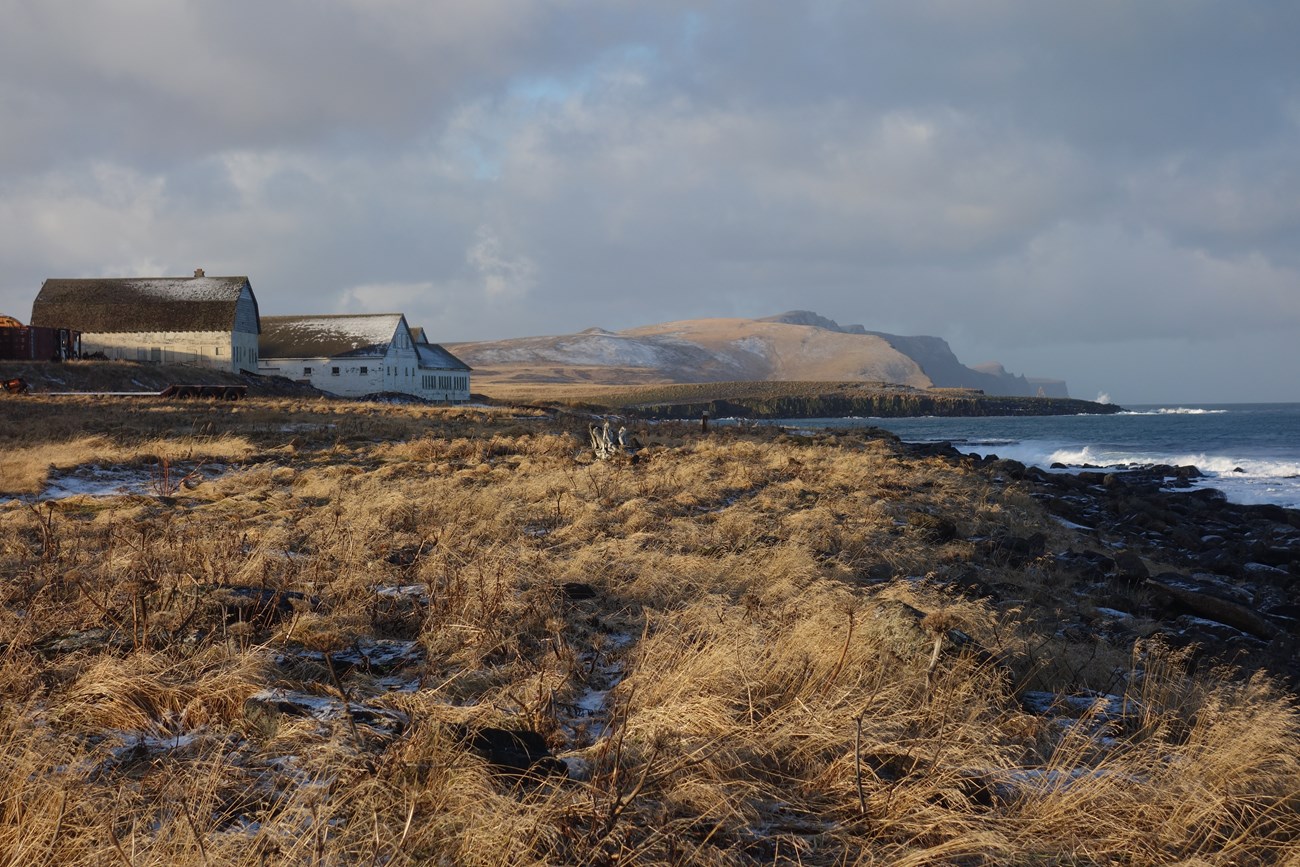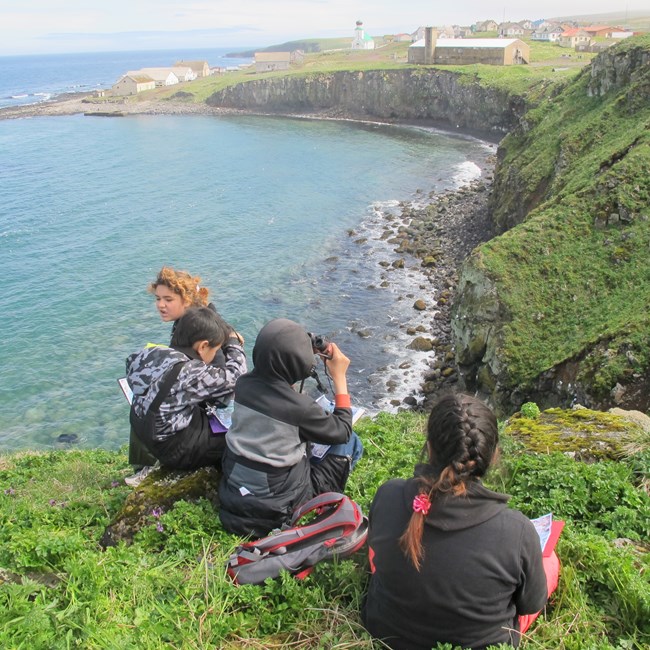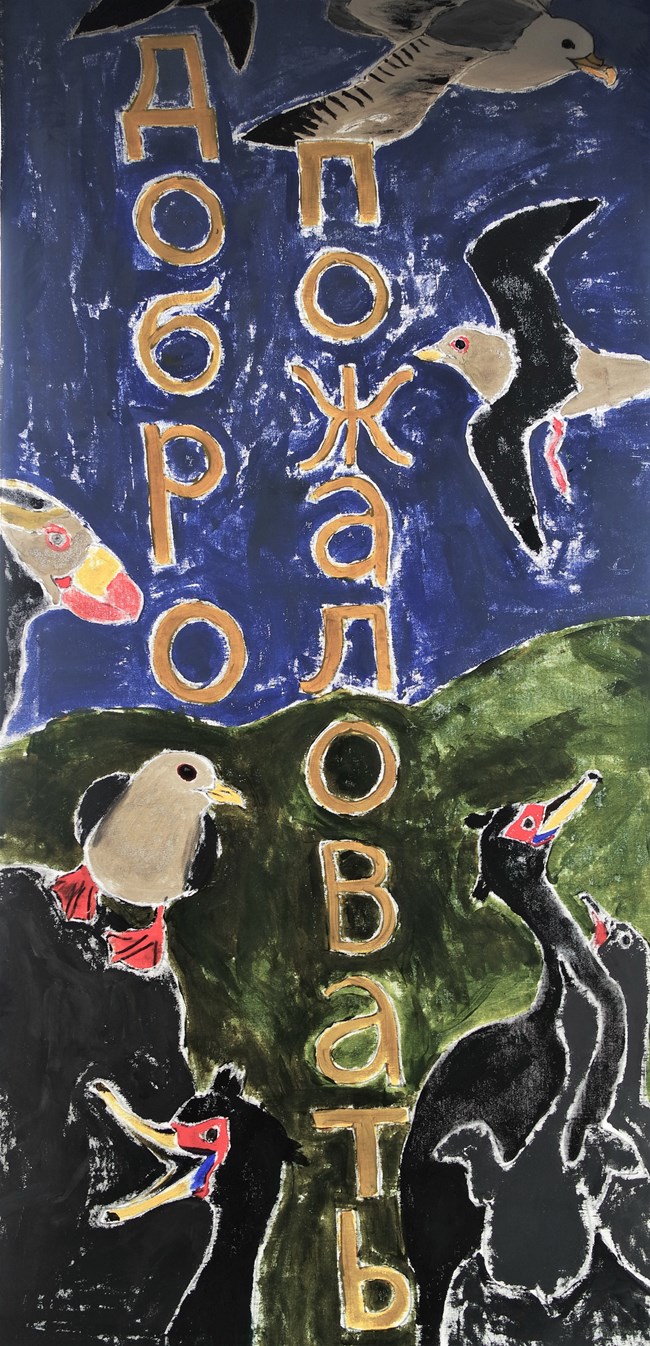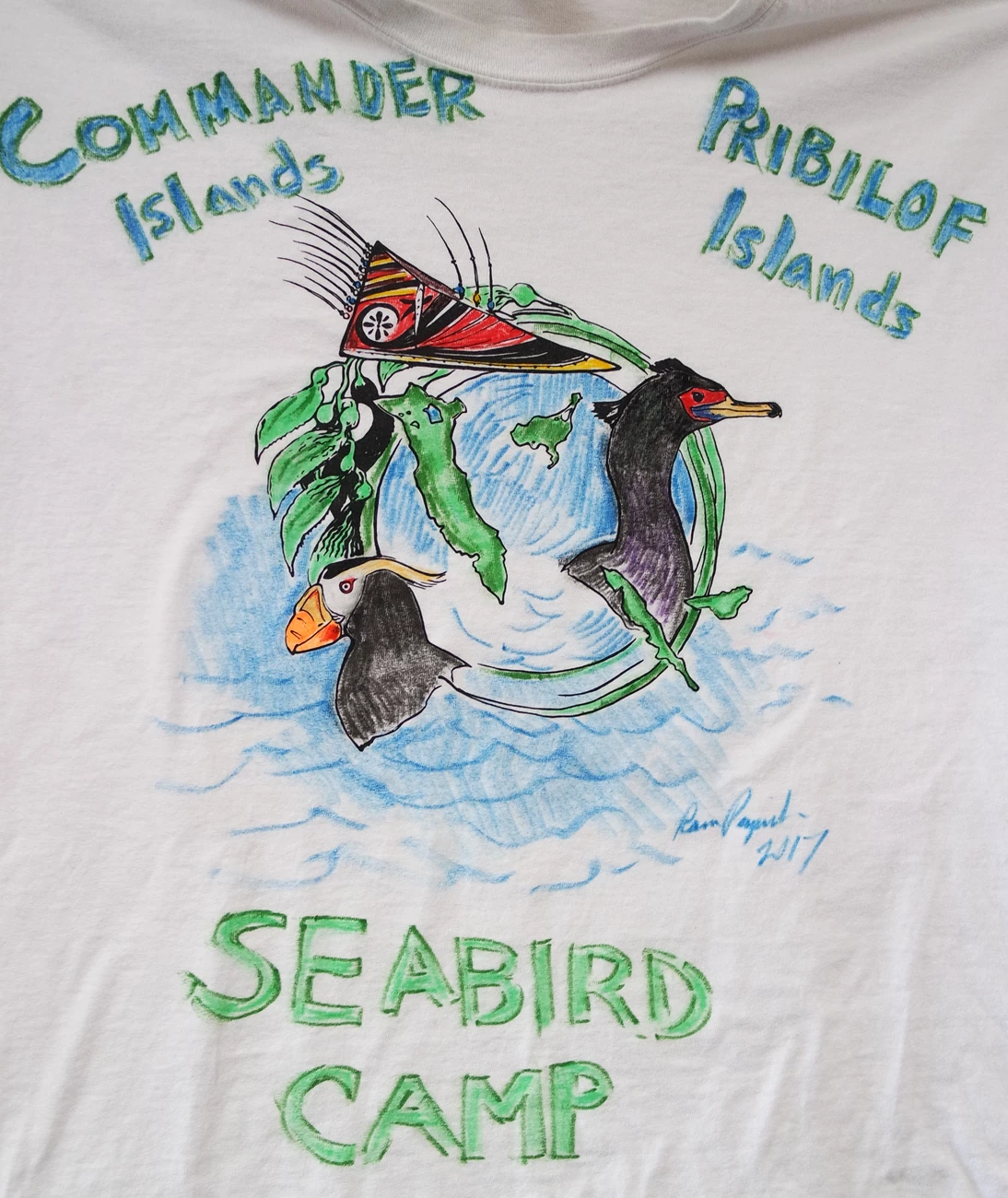
photo by Ann Harding
In the scientific and conservation communities, seabirds are used as important indicators of a multitude of issues including climate change, marine temperatures fluctuations and consequent prey range shifts, pollution, commercial fishery activity and more. Their wide geographic spread and diverse marine-based diet make them excellent at informing scientists about changes in their environment. In the Bering Sea particularly, as sea temperatures rise in response to climate change, due to starvation as their fish and squid-based prey has moved elsewhere.
Eleven different seabird species commonly breed on the Pribilof Islands, and many researchers and birdwatchers visit the islands for the seabirds specifically. Seabirds have played and continue to play an important role in local indigenous subsistence and culture. The Unangan population of the Pribilof Islands traditionally harvested seabirds for food, tools and clothing. Unangan birdskin parkas are famed for warmth and comfort. Numerous traditional tales and stories celebrate people’s special relationships to seabirds and knowledge of their ecology.

photo by Ann Harding
In 2015, the Seabird Youth Network began working with the Shared Beringian Heritage Program to initiate a long-term connection between the youth of the Pribilof Islands in Alaska and the Commander Islands in the Russian Aleutians. Despite 900 miles separating these island groups, they have a lot in common. Both the Commander and Pribilof Islands are vital breeding grounds for northern fur seals and seabirds. The first permanent settlements on both islands were Russian fur seal harvesting outposts. In the early 19th century, Unangan peoples, indigenous to the Aleutian Island chain in the Bering Sea, were forcibly relocated to the Commander and Pribilof Islands by the Russian-American Company to work at these outposts. The Pribilof Islands were bought from Russian by the U.S. government in 1867 within the larger purchase of the now State of Alaska. Today, there are only two communities on the Pribilof Islands: St. George with approximately 100 residents and St. Paul, population 480. The only settlement in the Commanders is the village of Nikolskoye, home to 800 people. Despite these shared ecological and socio-cultural histories, the physical distance between the Commander and Pribilof Islands’, their isolated locations, and the need to obtain visas for international travel make it difficult for these two communities to come together. The Seabird Youth Network saw their program as an opportunity to connect the youth of these communities in a way that encourages personal and educational growth and development.The Seabird Youth Network Beringia program is a community based project with a three-pronged approach: seabird conservation; cultural sharing, and an exchange visit.
The Shared Beringian Heritage Program funding and support enabled the Seabird Youth Network to design a curriculum as an “Introduction to Seabirds”, including information on breeding and feeding ecology, conservation, and why we study seabirds. The curriculum was designed for 5/6th grade, with activities that can be adapted for older or younger students making it more appealing to rural communities with multi-age classrooms such as the Pribilof School District and Nikolskoye. It aligns with Next Generation Science Standards and Alaska Science Standards, and is available in Russian and English: http://seabirdyouth.org/seabirds/.The contents include seven, fifty-minute lessons accompanied by hands-on activities and Powerpoint presentations.
The Shared Beringian Heritage Program funding and support enabled the Seabird Youth Network to design a curriculum as an “Introduction to Seabirds”, including information on breeding and feeding ecology, conservation, and why we study seabirds. The curriculum was designed for 5/6th grade, with activities that can be adapted for older or younger students making it more appealing to rural communities with multi-age classrooms such as the Pribilof School District and Nikolskoye. It aligns with Next Generation Science Standards and Alaska Science Standards, and is available in Russian and English: http://seabirdyouth.org/seabirds/.The contents include seven, fifty-minute lessons accompanied by hands-on activities and Powerpoint presentations.

Photo by Ram Papish
The initial project was such a success that the Seabird Youth Network was awarded cooperative agreement funding once again from the Shared Beringian Heritage Program for three more years beginning in 2020 to continue this popular work. The Seabird Youth Network hopes that sometime in the next three years (depending on the course of the COVID-19 pandemic) they will be able to bring youth from the Pribilof Islands to Nikolskoye to attend Bering Island’s annual etno-ecological camp, “Camp Aglakh”. In addition to building communication and understanding among the youth of these communities, it is also important to establish relationships between biologists in Alaska and the Commander Islands working on shared seabird conservation concerns. The Alaska Maritime National Wildlife Refuge (ANWR) and the Commander Islands Nature Reserve (CINR) share a common goal: protection of marine resources on lands and waters within both areas. The areas have common threats of climate change, oil spills and other contaminants, introduced invasive species, and changes in marine food webs due to man's activities. A biologist from AMNWR will join the youth visit to the Commander Islands. The visit will include meetings between biologists from the CINR and AMNWR, a field trip to a seabird colony, a shared community event in Nikolskoye, and the creation of a public mural symbolizing the unity between the nations of Beringia.
By Maya Greally,
DCSP@UW Scholar and 2020 Beringia Intern
By Maya Greally,
DCSP@UW Scholar and 2020 Beringia Intern

photo by Ann Harding
Last updated: September 28, 2020
